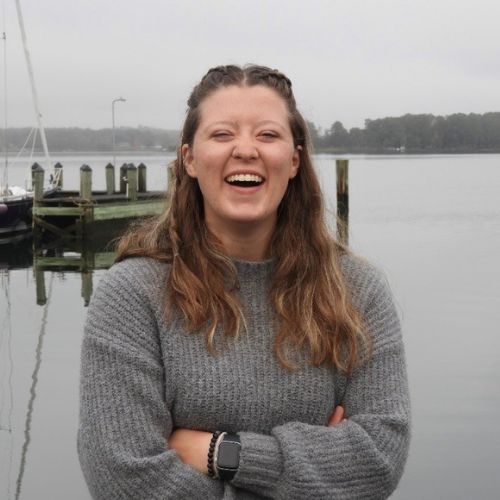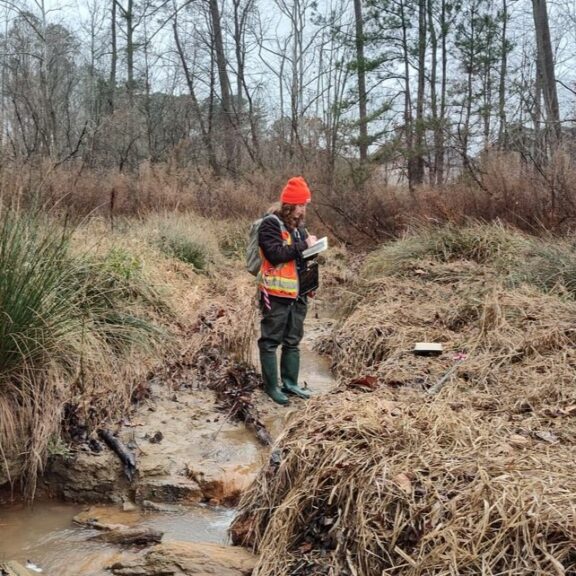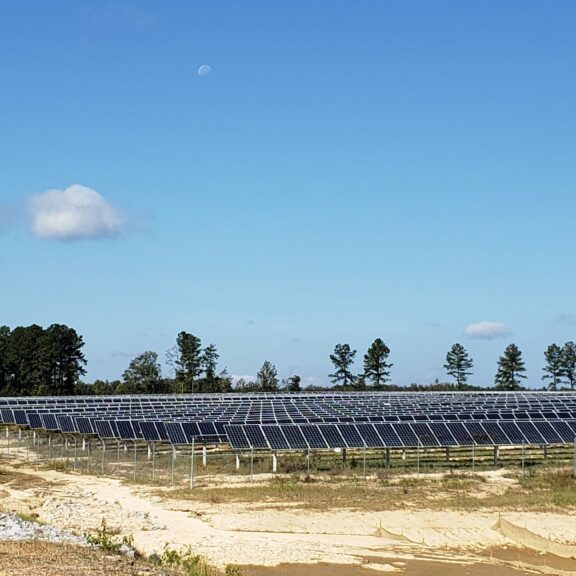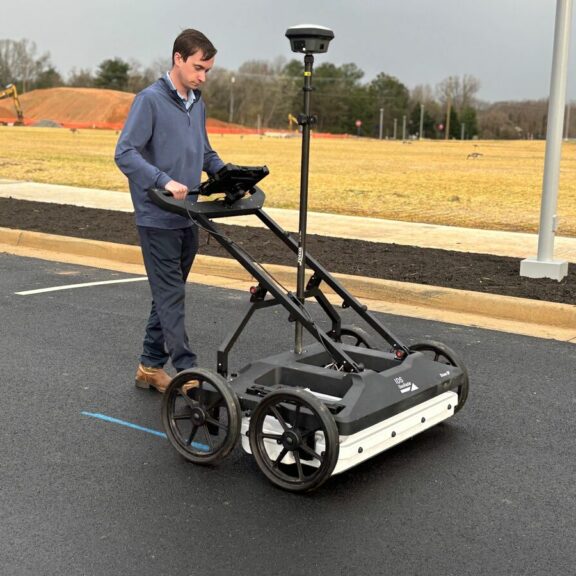Hello! My name is Madeline Kenerly, and I am interning this summer with Timmons Group’s environmental services team in Richmond, Virginia. During the school year, I can be found studying Environmental Studies and Anthropology at St. Mary’s College of Maryland. I am expecting to graduate in December 2023, so excited!
Timmons has given me the opportunity to not only work outside but to get some hands-on learning. Almost every day I am outside performing wetland delineations, bird surveys, or stream impact checks. Not only have I been able to have firsthand experience with these activities, but I have also worked in some super pretty sites with amazing critters and plants.
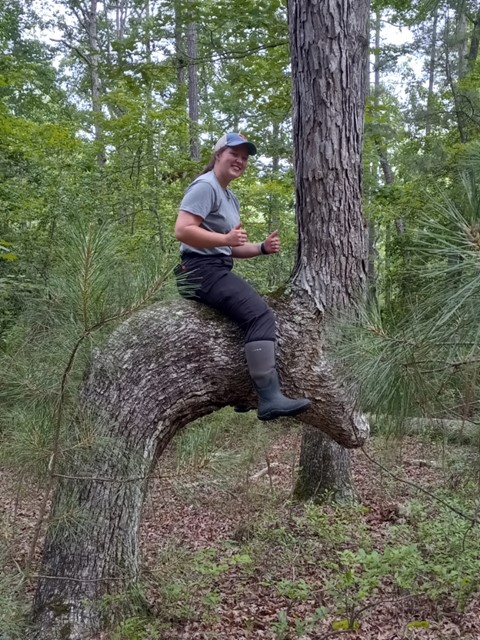
My coworker, Alana, and I found this unique tree in the woods while performing a stream impact check. This tree could be shaped like this if another tree fell on it while it was growing. In many places, trees with unique shapes are referred to as ‘trail trees’ because they are a good landmark when venturing in the woods.
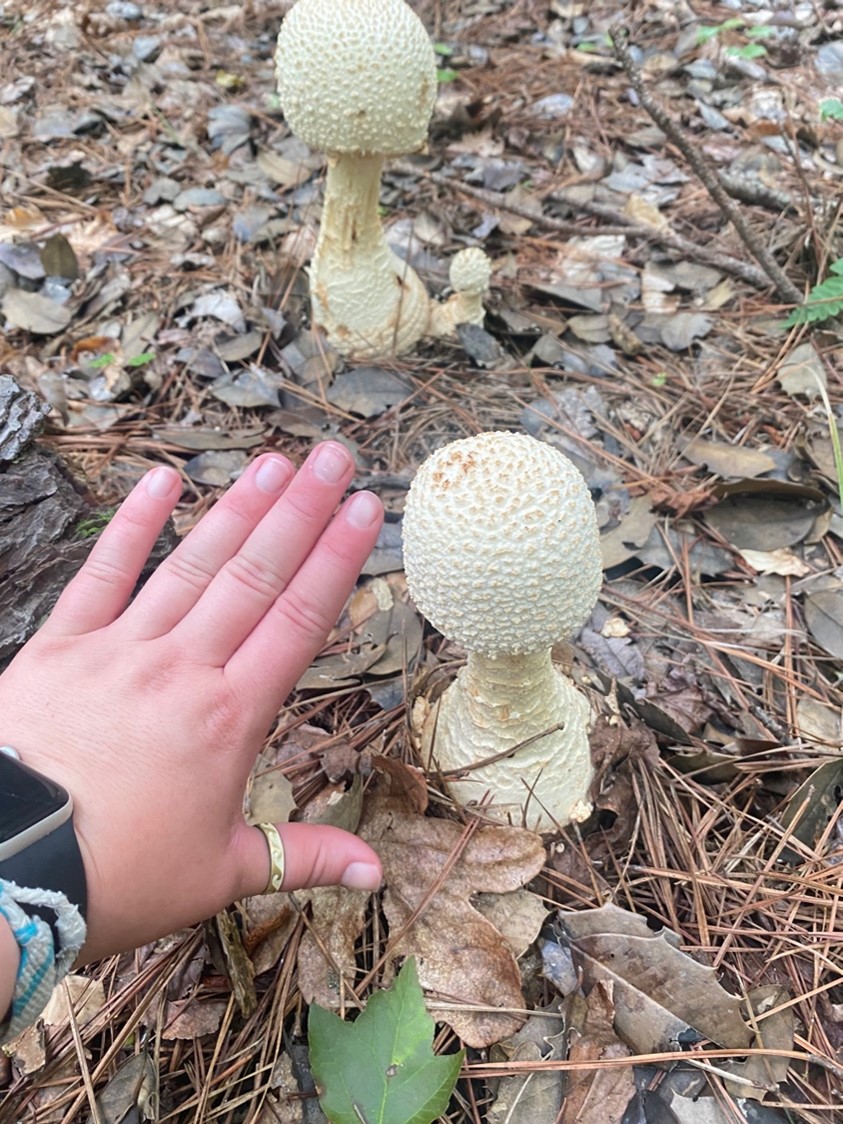
We come across a lot of different types of fungi while in the field. This is a young mushroom, so it would be easier to identify if we took a sample. While this is a young mushroom, it is the biggest mushroom I have ever seen.
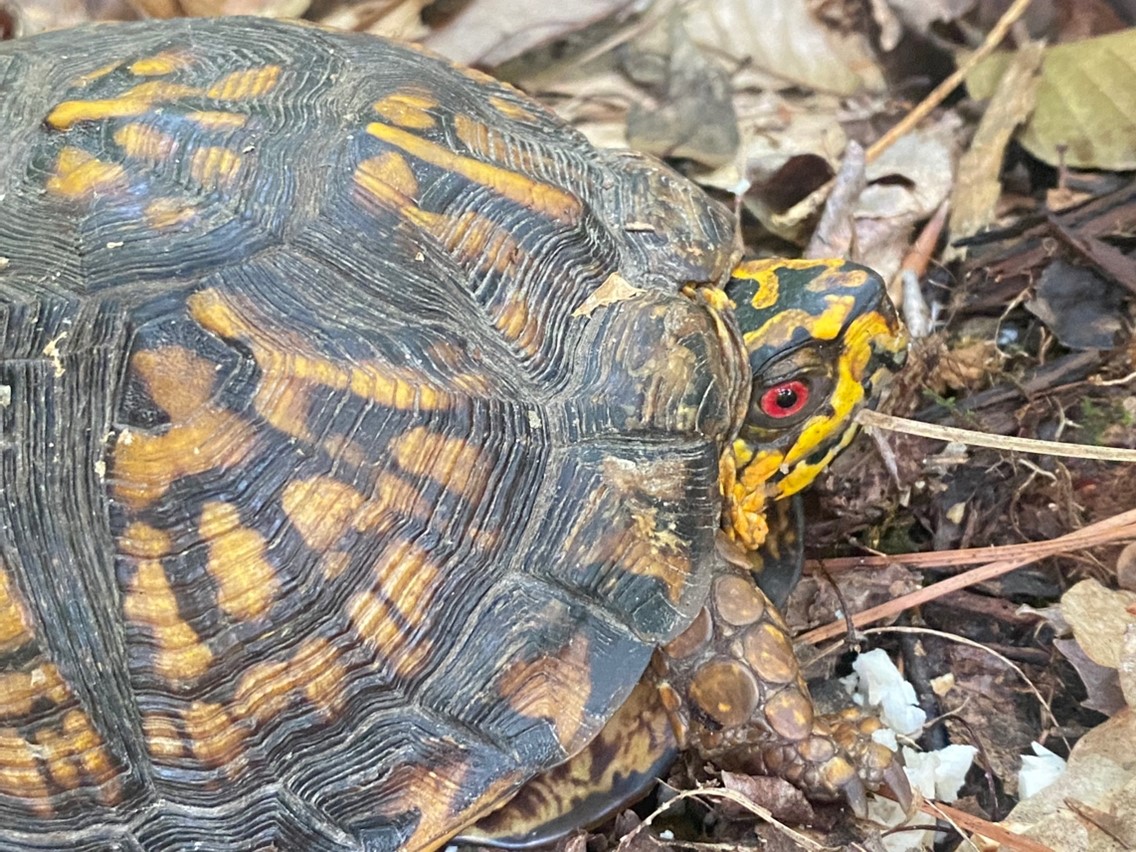
We also see a lot of wildlife in the field, including box turtles like this one (who I named Edwin!). Box turtles have very powerful senses of vision and smell. They are omnivores and eat various animals and plants, like insects, snails, fungi, flowers, and berries. Make sure to keep your eyes peeled on the ground, these guys are very good at blending into fallen leaves and dirt.
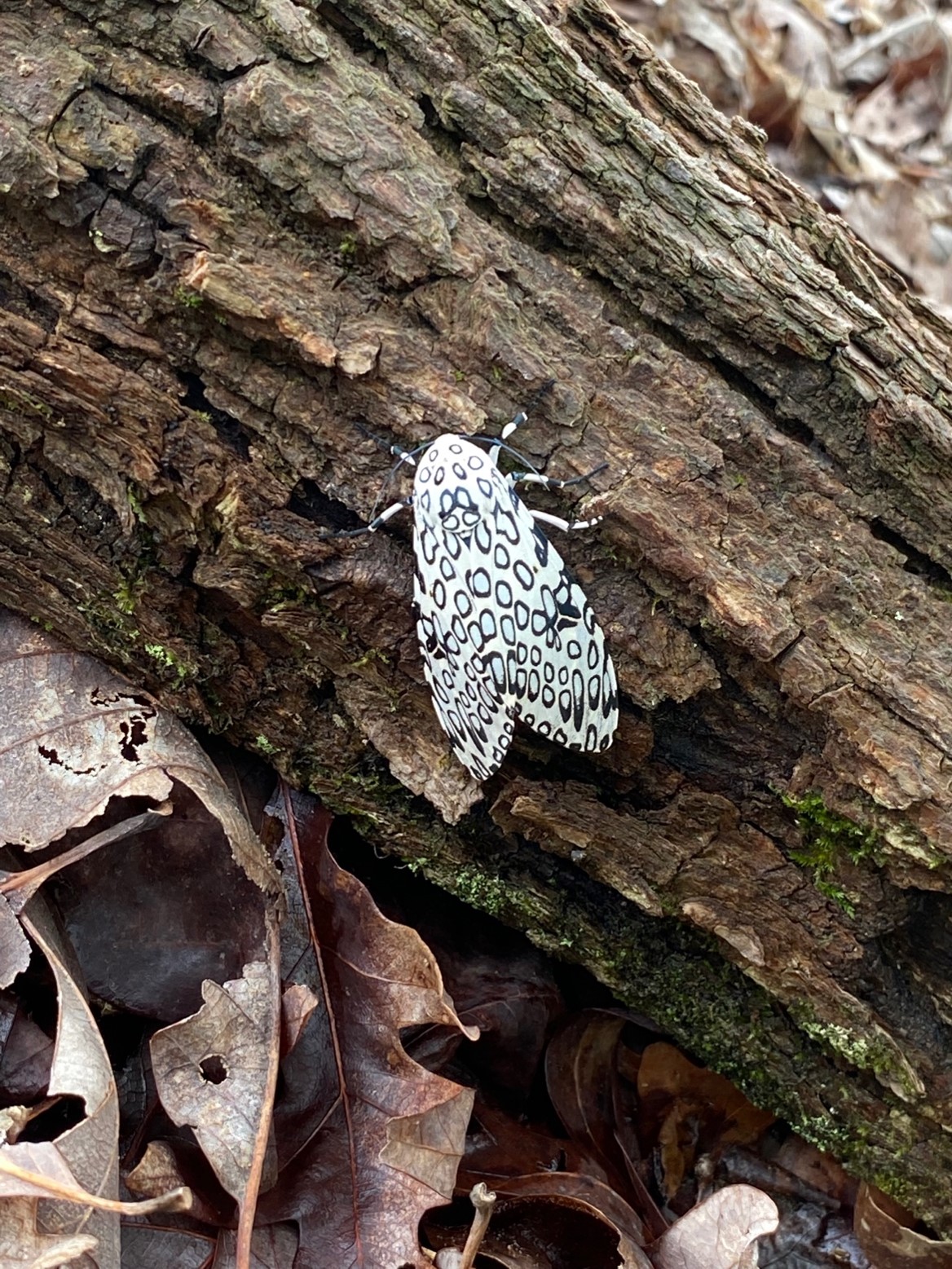
My coworker, Amanda, and I ran into this cool giant leopard moth while we were working in the mountain. This moth looks very photogenic and eye-catching on this tree bark because its patterns are meant to ward off potential predators.
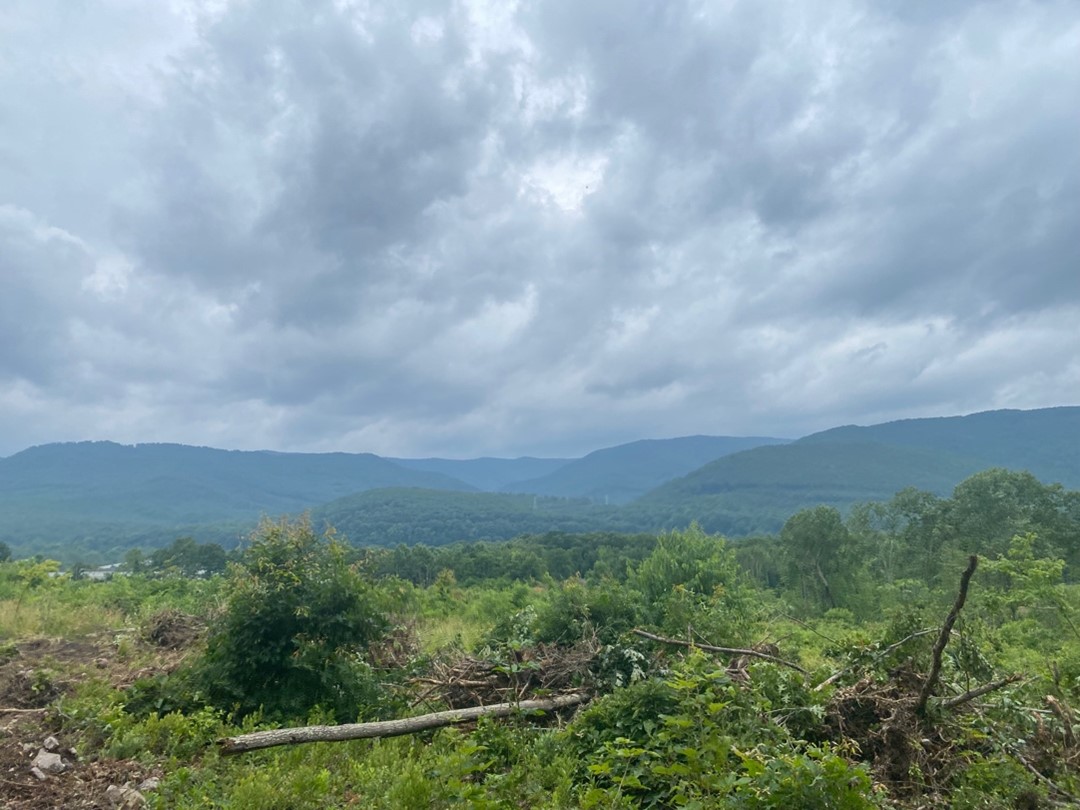
This was probably the prettiest site we were able to work at; it was in Alleghany, Virginia. Here we were barricade flagging, which shows clients where they are not able to cut down trees.
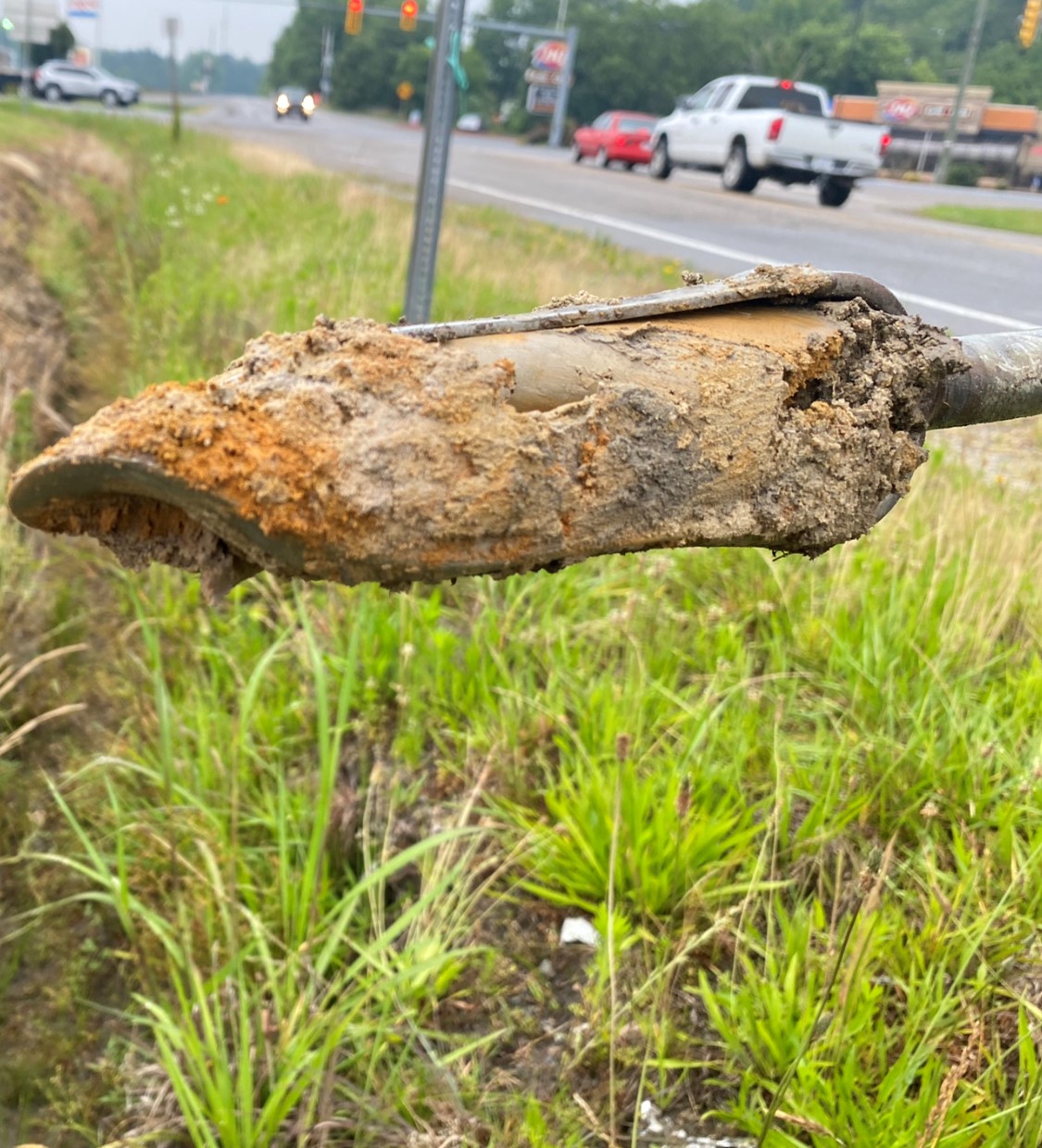
This is an example of a soil plug, a tool that helps us determine whether the area is a wetland or an upland. As you can see, there are several different colors within the soil plug, which tells us that the soil is indicative of a wetland. Wetlands are important for flood protection and erosion control, as well as providing a home to many different types of critters.
I am super excited to see what else my summer has in store for me. I hope to go out on some ponds work and help out on more stream impact checks. I also can’t wait to take everything I’ve learned here at Timmons Group and apply it to my studies at school. We have a lot of wetlands at St. Mary’s so this work will be very beneficial!
Interested in an internship like Madeline’s? Get to know the possibilities at timmons.com/internships.
